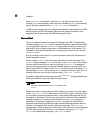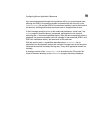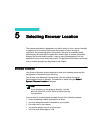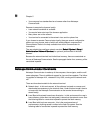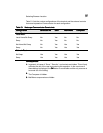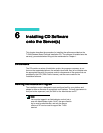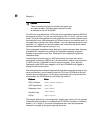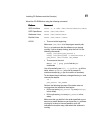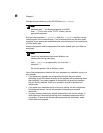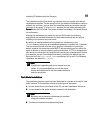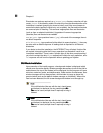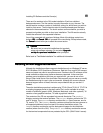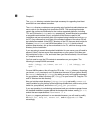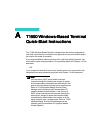
40
4040
40
Chapter 6
Caution
CautionCaution
Caution
There is currently no check for sufficient disk space and
no undo procedure. Total disk space required to install
all software on the CD is 650 MB.
On UNIX, the script determines if GUI mode will be used based upon the DISPLAY
environment variable; if it is set, the script uses the GUI, if it is not, it will run in text
mode. This allows the installation to work graphically from a remote computer (such
as installation from a UNIX workstation via Telnet to a server in a machine room), or
non-graphically (running in the Telnet window). If you are operating remotely or as a
superuser “
su
” logged-in to root from another user, make sure the access control
has been disabled as required (using
xhost
).
Text and graphical installation modes both ask for exactly the same data. However,
a Windows NT installation only prompts for information regarding supported
features and prompts for less. Also, Windows NT only supports the graphical
installation mode.
To determine the current user in a UNIX environment, the script looks at two
environment variables. If USER is set, it is referenced for root/non-root permission.
If USER is not set, LOGNAME is used in the same manner. This is because
Openserver uses USER when logged in via X and LOGNAME when logged in
through the text mode console.
After completing the worksheets (Appendix B) and determining the topology of your
server environment, you will need to install the CD in the CD-ROM drive on your
machine and mount the drive. For the same configuration as for the terminal test
environments, the CD-ROM drive is as follows (by platform):
This may be different for your configuration. Consult your manual. For the purpose
of describing the procedure, it is assumed the CD-ROM is mounted on a directory
named /
cdrom
. Again, if you mount it somewhere else, make the appropriate
interpretive changes as you go through this document.
Platform
PlatformPlatform
Platform Drive
DriveDrive
Drive
SCO UnixWare
/dev/cdrom/c0b0t510
SCO OpenServer
/dev/cd0
Slackware Linux
/dev/cdrom
Red Hat Linux
/dev/cdrom
HP/UX
/dev/c1t2d0



